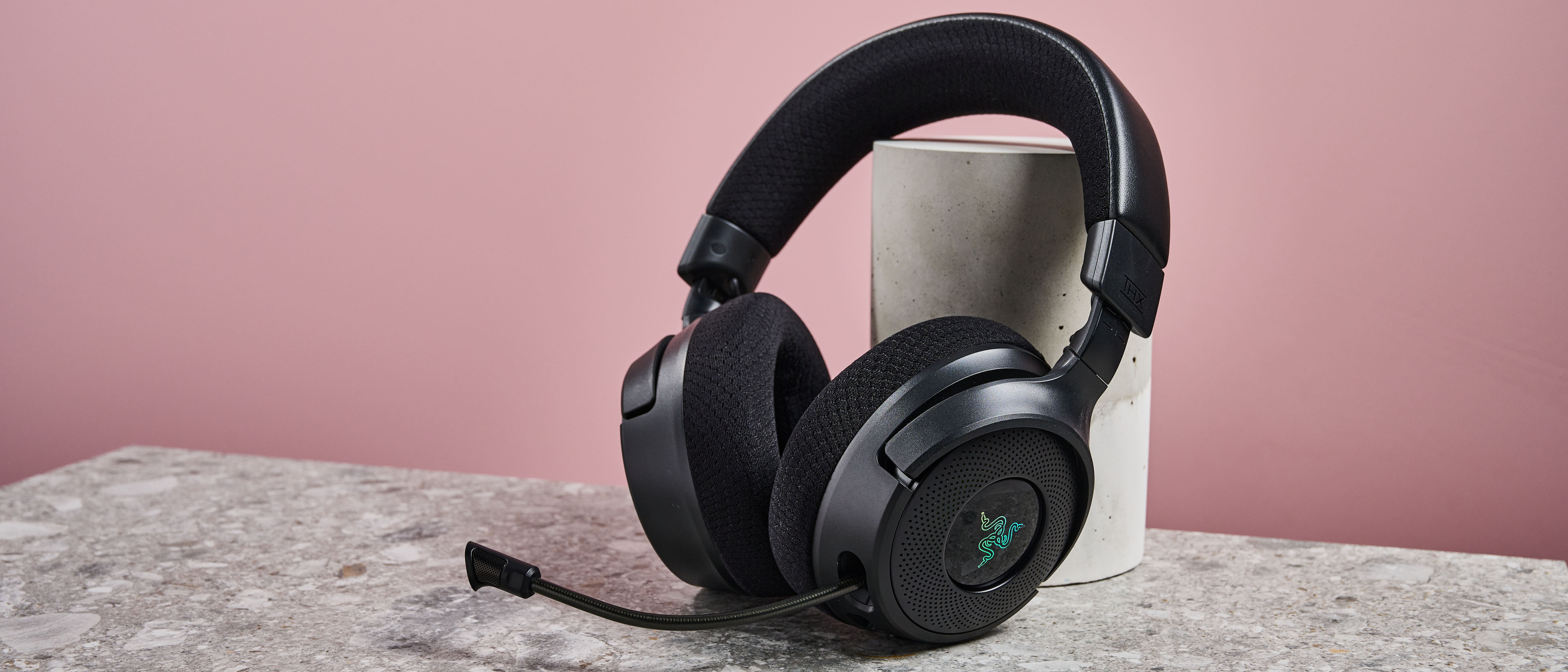TechRadar Verdict
The Razer Kraken V4 is a well-built gaming headset from a titan in the world of gaming peripherals. The various adjustments available both on-board and via Synapse are welcome, as they can improve sound and microphone quality considerably. However, if you want the best, fullest sound around, then there are better gaming headsets for that purpose.
Pros
- +
Plenty of features
- +
Retractable mic
- +
Reasonably priced
Cons
- -
Weak bass
- -
Volume wheel issues
- -
Not as comfortable as some headsets
Why you can trust TechRadar
Razer Kraken V4: two-minute review
The Razer Kraken V4 is the latest incarnation in Razer’s mid-range line of wireless gaming headsets, promising improvements over previous generations. True to Razer’s recent design language, the Kraken V4 keeps the gaming accouterments to a minimum, although the RGB lighting does enough to brighten the otherwise austere black colorway.
Every aspect of Kraken V4's construction feels premium, from the outer shell and swivel mechanisms to the switchgear and microphone. My one gripe is that the volume control is a little too loose, and leaning back in your chair can trigger accidental scrolls.
Wearing the Kraken V4 is a pleasant experience, if a little bulky given how wide the drivers are. The headband and earcups are as plush and comfortable as many of the best wireless gaming headsets, and glasses wearers should also get on well with them. However, the inside of the drivers did press into my ears slightly, which can cause discomfort over time, but not to the extent of other headsets I’ve tried.
There are plenty of features on the Kraken V4, including various listening modes. These can be toggled via a button, or customized in greater depth using the Razer Synapse software. There are detailed EQ settings and various modes to toggle, including the near-essential Bass Boost function. There are also mic settings in a similar vein, including EQ and noise cancellation settings.
In practice, I didn’t find the various sound modes to be particularly useful. Barring Music mode, the rest reduce low and mid frequencies too much. And even with Music mode selected and Bass Boost activated, the low-end is still left wanting.
Another feature I would recommend keeping on is THX Spatial Audio. Unfortunately, this only works on PC, but it conveys a much fuller sound. Using a wired connection via USB is marginally better too. However, even with these recommendations, there are still better-sounding gaming headsets out there, such as those in Beyerdynamic’s MMX lineup.
The microphone offers good vocal quality, and the various settings are useful, especially noise cancellation, which prevents unwanted sounds from coming through with aplomb.
Battery life is good too, although as Razer indicates, it can vary wildly depending on usage. I managed to get around a couple of days worth of use out of it, which is on par with most other wireless gaming headsets.
While it’s priced slightly below the Razer BlackShark V2 Pro, that headset offers bigger drivers and a longer battery life. Still, both share numerous specs, so you’re not missing out on much.
It also undercuts some of the best wireless headsets around, such as the SteelSeries Arctis Nova Pro Wireless, our pick as the best PC gaming headset. And if you’re happy to keep the cables, then there are wired gaming headsets out there with even better value, such as the Epos H3.
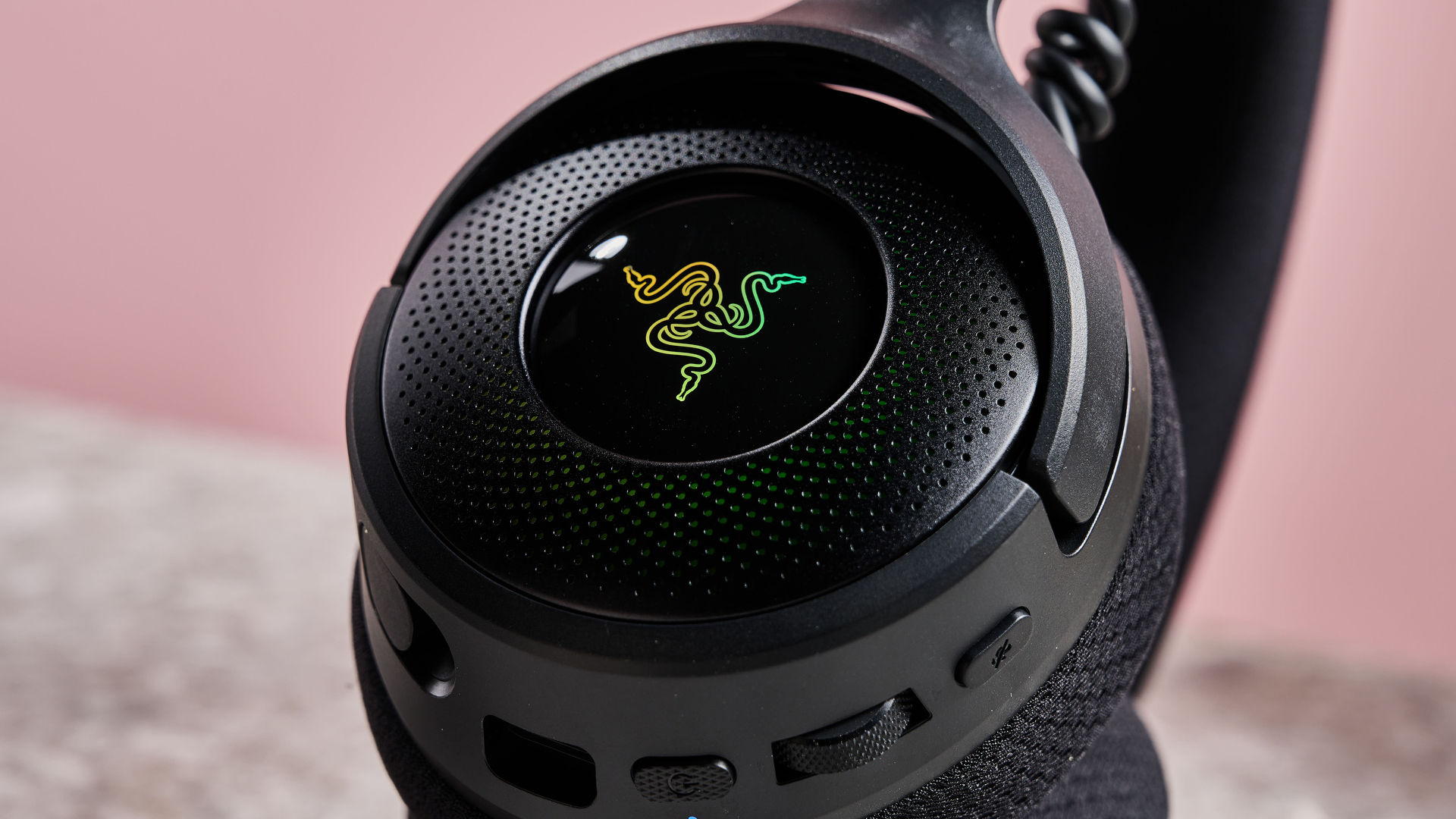
Razer Kraken V4 review: price and availability
- $179 / £179 / AU$329
- Available now
- Black colorway only
The Kraken V4 costs $179 / £179 / AU$329 and is available now. It comes in one colorway: black.
As wireless gaming headsets go, the Kraken V4 is priced quite well. It’s slightly cheaper than the Razer BlackShark V2 Pro, our pick as the best wireless gaming headset overall. However, that is a headset designed for esports, and although both feature Razer’s HyperSpeed Wireless technology and HyperClear Super Wideband microphones, the TriForce titanium drivers are 50mm on the BlackShark V2 Pro as opposed to 40mm on the Kraken V4. The BlackShark also has a battery life of up to 70 hours, whereas the Kraken can only manage up to 50 hours.
If you’re after superlative sound over features, then Beyerdynamic’s MMX range of gaming headsets could fit the bill. However, these are considerably more expensive, even though the MMX 300 and 330 Pro are wired. And as we noted in our MMX 200 Wireless review, this headset suffers from awkward setup and connectivity.
If you can live with a cable-only connection, then you can’t do much better than the Epos H3, our pick as the best wired gaming headset overall.
Razer Kraken V4 review: Specs
Price | $179 / £179 / AU$329 |
Weight | 12.3oz / 350g |
Compatibility | PC, PlayStation 5, PlayStation 4, Nintendo Switch, Steam Deck, Android, iOS |
Connection type | Wired (USB-A), Wireless (Bluetooth 5.3, 2.4GHz USB dongle) |
Battery life | Up to 50 hours |
Features | Razer HyperSpeed Wireless technology, Retractable Razer HyperClear Super Wideband Mic, THX Spatial Audio |
Software | Razer Synapse |
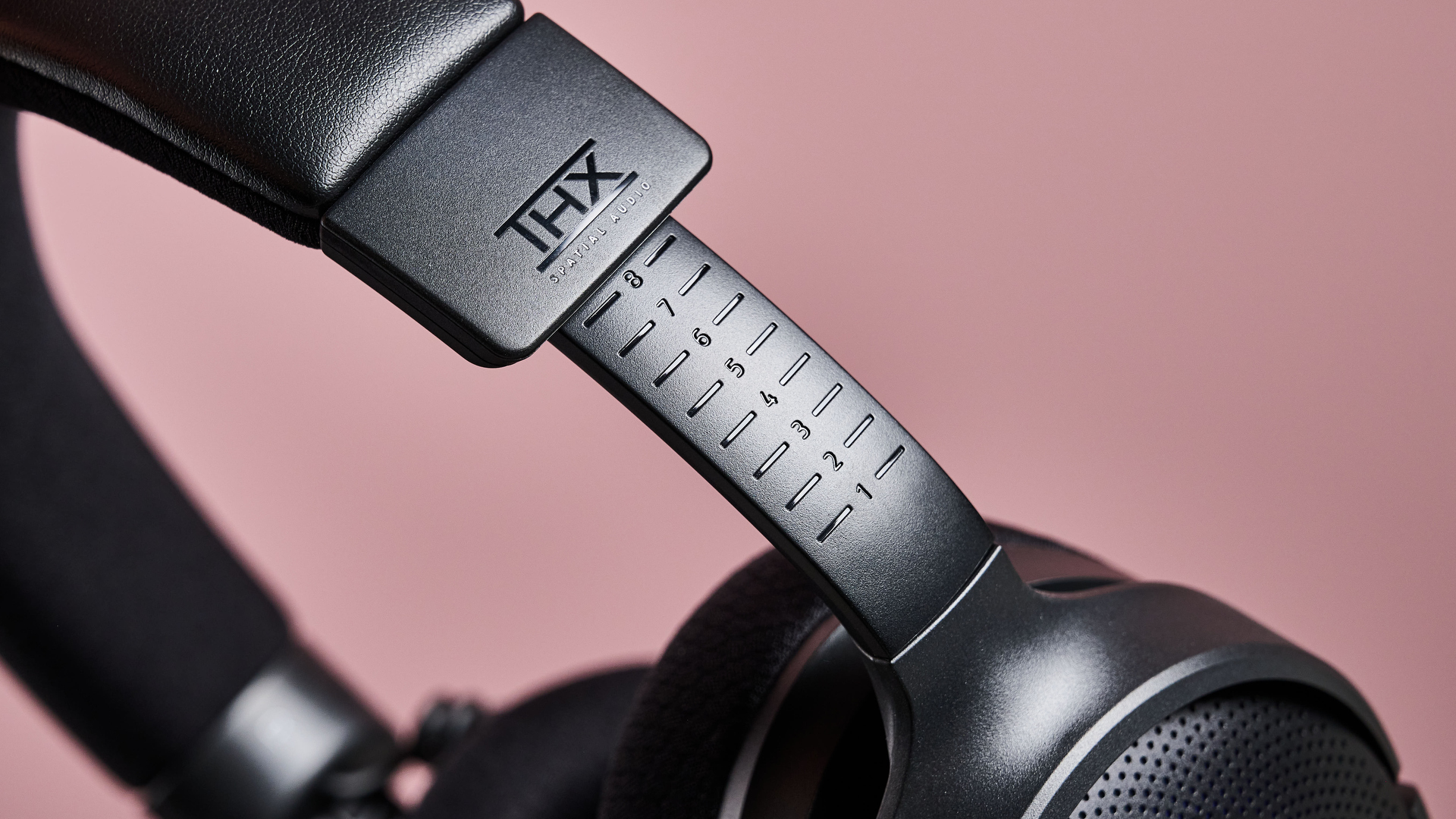
Razer Kraken V4 review: design and features
- Understated design
- Relatively comfortable
- Razer Synapse integration
In the flesh, the Kraken V4 is relatively understated for a piece of gaming hardware, although the key indicators are still there. The black design is illuminated by a large RGB light display on both drivers, which can be customized in-depth via Razer’s peripheral software, Synapse.
Although the oval driver design helps to keep their profile slim, the Kraken V4 is still relatively bulky thanks to the protrusion of the drivers, although the drivers do swivel 90 degrees, which makes them easier to hang around your neck and store.
The drivers themselves don’t get in the way when leaning back in your chair or sofa, but annoyingly the volume wheel does, which led to frequent accidental scrolls and made me reluctant to ever recline fully. Therefore, this isn’t a headset I could recommend for sofa players.
The padding on the headband and earcups is soft and well-cushioned, allowing for long gaming sessions, even for those who wear glasses. It also doesn’t seem like the kind of material that will flake over time, which bodes well for its longevity – although the headband isn’t replaceable should it perish.
Despite the overall comfort, I did find the inside of the drivers pressed slightly into my ears – a common problem I experience with many headsets and headphones – which can cause aching after a long time.
The build quality of the Kraken V4 is up to the usual Razer standards, with a solid yet lightweight construction and premium, easy-operating buttons. The included USB cable is braided yet thick and seems quite durable. It also doesn’t weigh down the headset, as other headset USB cables can. The aforementioned issue with the volume wheel is one of the only missteps and is mainly due to the looseness of the incremental notches.
The party piece of the Kraken V4, though, is the retractable microphone. For the most part, this is easy to operate, although it can be a little cumbersome to put back, as the gooseneck design tends to fold as you attempt to push it back in. Once you get the knack, however, it’s an elegant solution to keeping the mic stowed. Adjusting and fixing the mic into position is also easy, although the cable isn’t that long, so you may struggle to place the tip right in front of your mouth (it only managed to reach the side of my lips). Again, as with the rest of the headset, the microphone feels premium and hard-wearing. There’s no cloth tip either, removing another point of potential degradation.
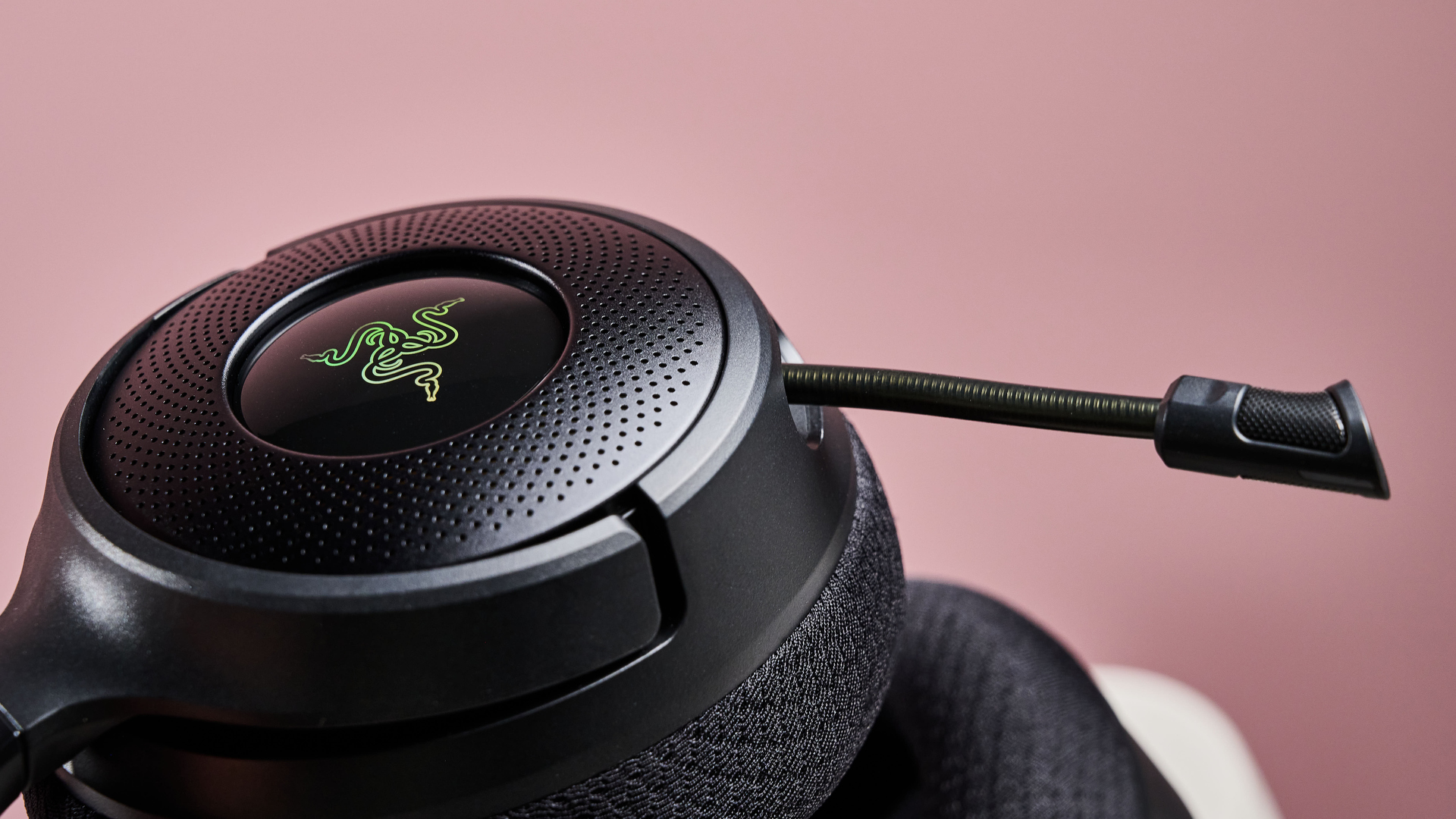
As for features, the Kraken V4 includes various listening modes depending on the type of media you’re consuming, including Movie, Music and Gaming modes, which can be activated with the press of a button.
This same button can be pressed twice to quickly switch between Bluetooth and 2.4GHz modes, which works quite quickly and efficiently. There’s also a mute mic button, and a button that can be held to allow for the volume wheel to adjust the balance between game and mic audio, although this implementation is somewhat awkward, and failed to work consistently during my tests. Thankfully, many of these button presses are accompanied by clear audio cues, so you’re sure when they are activated.
The Kraken V4 can be customized further using Razer Synapse. In this software, you’ll find adjustments for the RGB lighting, including options for different colors and patterns. There are also audio enhancements including bass boost and vocal clarity enhancements.
The aforementioned media modes can be altered to your liking, thanks to the 10-band EQ, letting you drag points on a graph to boost or reduce certain frequencies. This offers more in-depth sound sculpting than software from other rivals.
You can also alter mic settings, again with EQ adjustments available, although there’s only three modes to choose from here. You can also turn on monitoring to hear yourself through the headset, and there are various useful parameters to adjust thresholds for sound being picked up.
The Kraken V4 works on PC and various consoles, including the PS5 and Nintendo Switch. As the PS5 doesn't support audio over Bluetooth, the Kraken V4 can only connect wirelessly via the 2.4GHz USB-C dongle. Like the best PS5 headsets, the Kraken V4 connection is instant and works flawlessly with the console. Connecting via Bluetooth to the Switch is similarly easy and trouble-free. If you’re on Xbox, though, you’re out of luck as the Kraken V4 isn’t compatible; consider one of the best Xbox Series X headsets instead.
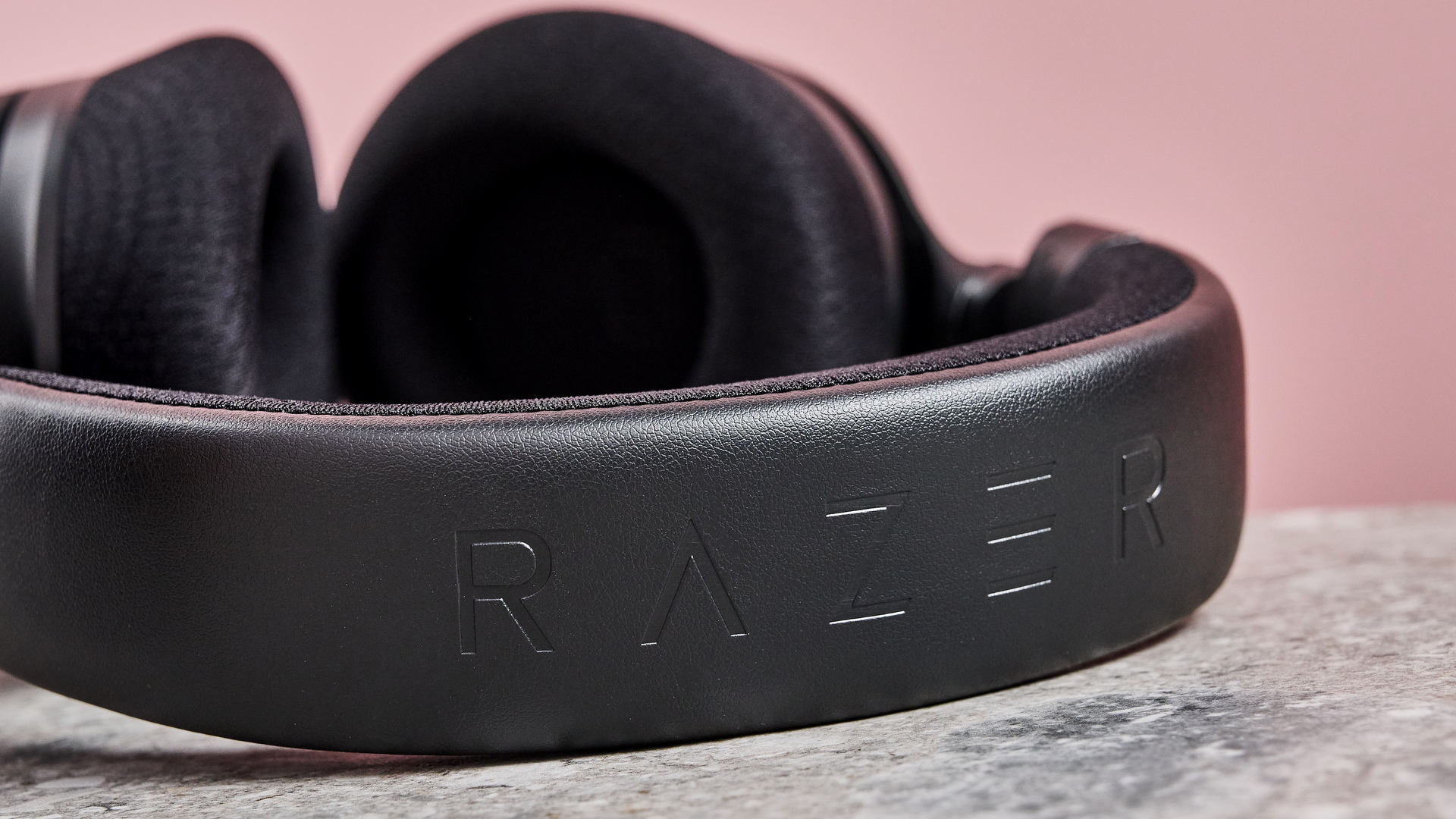
Razer Kraken V4 review: Performance
- Tweakable in Synapse
- Weak bass
- High-quality mic
The Kraken V4 offers well-balanced audio for gaming, although the low-end is lacking somewhat. The different listening modes, however, can alter the sound.
In theory, these different listening modes are nice, but in practice, I found that Music mode offers the best experience for all occasions, as it provides the fullest sound with the best bass response. This makes the other modes redundant: Gaming mode sounds too weak in the lower frequencies, whereas Movie mode scoops the mid-range frequencies far too much, which makes for a frankly bizarre listening experience that I can’t imagine anyone wanting to use.
There are also various enhancements, including Bass Boost. I would recommend having this on all the time, as it noticeably increases the low end without being overbearing. However, even with this activated, the bass still lacks the impact of headphones designed for audio playback. This weakness could also be attributed to the lack of isolation from the earcups, so the sense of immersion isn’t as strong as you might expect from over-ear headphones.
You might think this could be remedied by activating THX Spatial Audio, as the Kraken V4 supports this standard. However, I wouldn’t characterize the mode as adding more space – but again, it does offer a much fuller sound with more bottom end, and without overshadowing mids and highs. It’s a shame that this mode is only available on PC and not console.
There’s no discernible difference in sound quality between Bluetooth and 2.4GHz wireless dongle, although the latency is reduced slightly when connected via the latter. I also experienced a bug whereby the volume wheel wouldn’t work when in 2.4GHz mode on a Windows 10 machine, although this could’ve been a quirk of my particular setup. Sound is further improved when using a wired connection via USB. The bass response is fuller still, and the overall fidelity seems slightly improved as well.
The microphone quality is also good. Voices are rendered clearly, although some microphones do offer slightly better quality, such as the Beyerdynamic MMX models, but it’s still more than sufficient.
The various microphone adjustments work well too, especially the Noise Isolation and Voice Gate modes, the former of which prevents unwanted sounds and the latter lets you choose the threshold for input detection.
Battery life varies depending on usage, with a claimed maximum of up to 50 hours when the RGB lighting is turned off, or up to 35 hours when on. During my tests, I managed to get several days of use out of the Kraken V4, which is on par with other wireless gaming headsets.
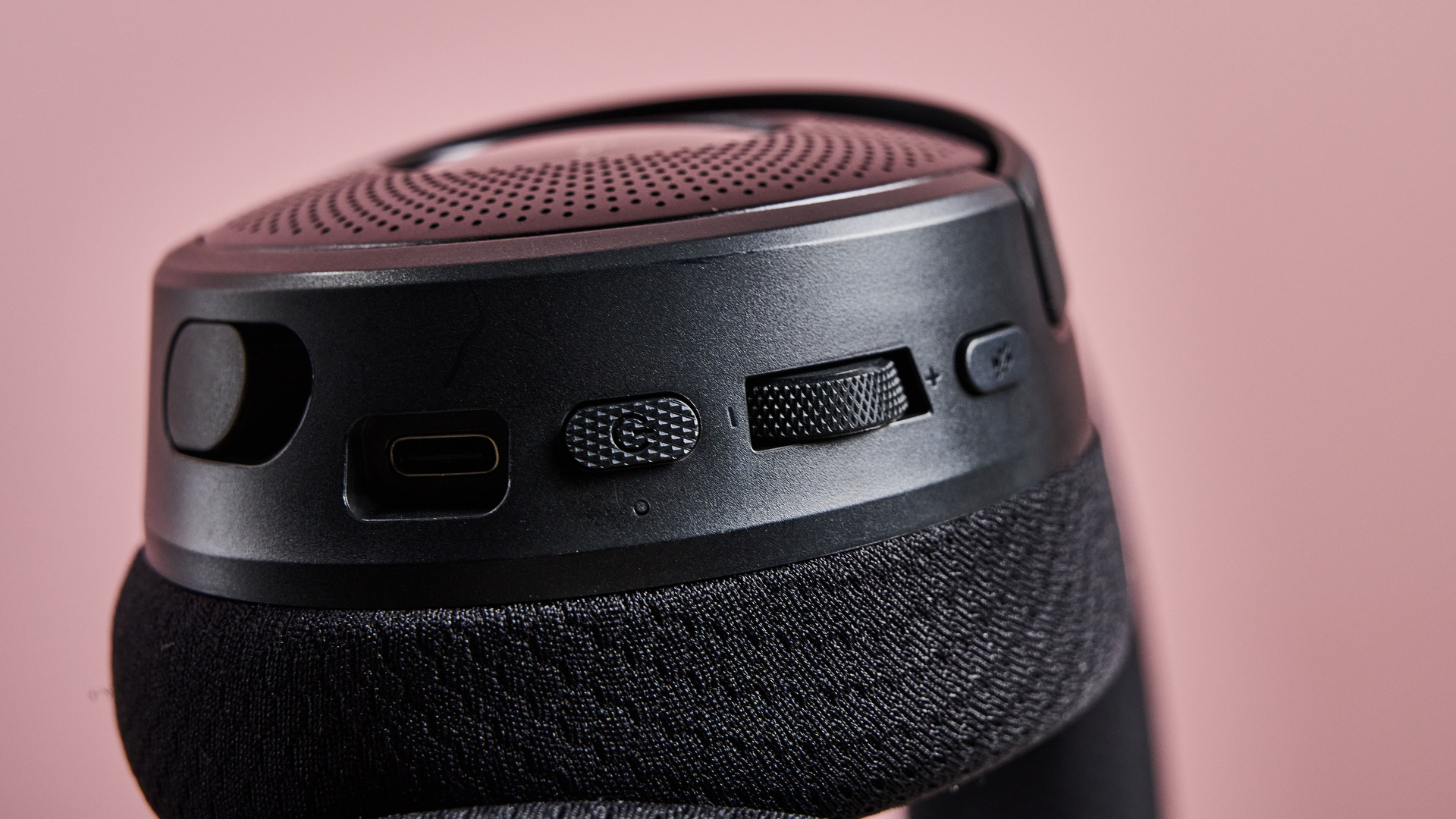
Should I buy the Razer Kraken V4?
Buy it if...
You want plenty of features
Thanks to its integration with Razer Synapse, you can tinker with the audio input and output, as well as the RGB lighting.
You want a retractable mic
There aren’t too many gaming headsets with a retractable mic, providing a neat solution to stowing it away.
Don't buy it if...
You don’t want to look like 'a gamer'
The RGB lighting and bulky design play into the gamer aesthetic, so if that’s not your thing, there are less gaming-centric alternatives out there.
You want the best sound across media
Although the sound suffices for gaming, for music the Kraken V4 pales in comparison to some other headsets, such as Beyerdynamic’s MMX series.
Also consider...
| Row 0 - Cell 0 | Razer Kraken V4 | Razer BlackShark V2 Pro | Epos H3 |
Price | $179 / £179 / AU$329 | $199 / £199 / AU$349 | $119 / £109 / AU$179 |
Weight | 12.3oz / 350g | 11.3oz / 320g | Not specified |
Compatibility | PC, PlayStation 5, PlayStation 4, Nintendo Switch, Steam Deck, Android, iOS | Xbox, PlayStation, PC, Nintendo Switch, mobile | Xbox, PlayStation, PC, Nintendo Switch, mobile |
Connection type | Wired (USB-A), Wireless (Bluetooth 5.3, 2.4GHz USB dongle) | Wireless (USB-C dongle), wired (USB-C, PC only) | 2 x 3.5mm jack / 1 x 3.5mm jack (GSA 30 PC Cable/GSA 30 Console Cable) |
Battery life | Up to 50 hours | Up to 70 hours | N/A |
Features | Razer HyperSpeed Wireless technology, Retractable Razer HyperClear Super Wideband Mic, THX Spatial Audio | THX spatial audio, dual connectivity, PlayStation 3D audio | Lift-to-mute mic, EPOS BrainAdapt Technology |
Software | Razer Synapse | Razer Synapse (PC) | None |
Razer BlackShark V2 Pro
Razer’s other gaming headset, the BlackShark V2 Pro takes our top spot as the best wireless gaming headset, and for good reason. The sound is great, and it features slightly bigger drivers and longer battery life than the Kraken V4. It’s also not much more expensive. Read our Razer BlackShark V2 Pro review.
Epos H3
If you’re happy to go wired, then the Epos H3 is simply the best wired gaming headset in our view. It offers terrific value, considering its exceptional sound quality and comfort. The large mic and awkward volume wheel are about the only drawbacks we found with it. If you’re prepared to pay substantially more, there’s a wireless version available too. Read our Epos H3 review.
How I tested the Razer Kraken V4
- Tested for several weeks
- Played on PC and on consoles
- 20+ years gaming experience
I tested the Kraken V4 for over a week. During that time, I used it for gaming, listening to music, and watching videos. I tried to use as many features and tweak as many settings as possible using the Razer Synapse software.
I played a variety of titles on PC, PS5, and Nintendo Switch, including Sea of Thieves, Silent Hill 2 Remake, Counter-Strike 2, and The Legend of Zelda: Tears of the Kingdom. I played online multiplayer in order to test the microphone in a true-to-life environment.
I have over 20 years of gaming experience and have tried numerous headphones and headsets during that time. I have also reviewed other gaming headsets.
- First reviewed October 2024.
- Read more about how we test

Lewis Maddison is a Reviews Writer for TechRadar. He previously worked as a Staff Writer for our business section, TechRadar Pro, where he gained experience with productivity-enhancing hardware, ranging from keyboards to standing desks. His area of expertise lies in computer peripherals and audio hardware, having spent over a decade exploring the murky depths of both PC building and music production. He also revels in picking up on the finest details and niggles that ultimately make a big difference to the user experience.
